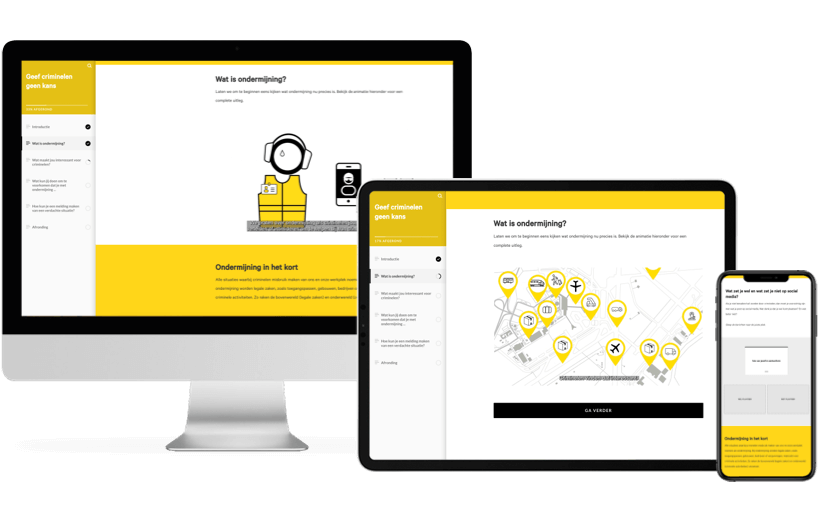We help you with custom eLearning
eLearning in its broadest sense
We develop custom eLearning modules, micro-learnings, interactive videos, animations, and Virtual Reality. We support the efficient rollout of learning programs and personalized learning. This prepares you for the future.
Are you curious about our solutions and services?

Custom eLearning
Do you want to teach specific knowledge, insights, and skills? Is risk reduction, proper use of resources, machines and systems, as well as knowledge about applying rules important within your organization?
We create custom eLearning programs that fully align with your objectives.

Interactive videos
For an engaging learning experience, choose our custom interactive videos, where participants make choices, search for clues, and explore scenarios at multiple points. Practical and relatable.
Animations
We use animations to explain complex concepts or content, for example, about machines, processes and procedures. This can be done in a straightforward manner or with a creative approach!

Virtual Reality
One of the key advantages of VR is its ability to simulate situations that might be too dangerous, expensive or difficult to replicate in the real world.

Efficient deployment and personalized learning
You want to implement eLearning and other online solutions quickly and easily. With a finger on the pulse and minimal hassle. And with a meaningful learning experience for participants. We take care of that for you.
By investing in increasing knowledge, insights, and skills, you protect your employees, information, and assets as an organization. You reduce risks, ensure the correct use of resources, machines, and systems, and ensure proper application of procedures. From onboarding to specialized learning programs: we help you with a targeted, future-proof, and scalable approach.
Impact
We aim for the content of all learning activities to be easily recognizable and readily applicable. This makes learning easier and more enjoyable.
Tooling
We use software tools that support daily learning. We activate, engage, and track progress and results.
Specialization
We excel in creating learning solutions that help reduce risks. From the correct use of machines and systems to the proper execution of procedures.
